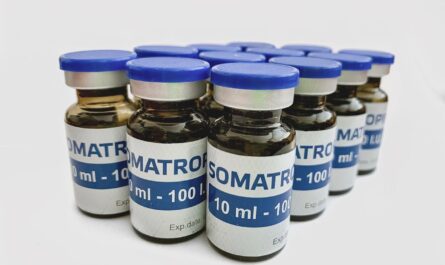Colonoscopy is a medical procedure where a flexible tube called a colonoscope is inserted into the rectum and large intestine to examine the mucosal lining and detect any abnormalities. Over the years, there have been advancements in colonoscopy devices which have improved the efficiency and effectiveness of this procedure. Let’s take a look at some of the latest colonoscopy devices that are widely used today.
Optical Imaging Technologies
With the advancement of digital imaging technologies, new optical imaging colonoscopy devices have been developed that provide enhanced visualization of the colon. Some of these technologies include:
High Definition Imaging: High definition imaging colonoscopes use advanced CCD and CMOS chip technology to produce high resolution images of the colon lining at 720p or greater resolution. This helps physicians more clearly see subtle mucosal lesions and polyps that may be missed on standard definition scopes.
Chromoendoscopy: Chromoendoscopy techniques utilize dyes like methylene blue or indigo carmine that are sprayed onto the colon surface during the procedure. This enhances the visualization of mucosal and vascular patterns which can help identify pre-cancerous lesions more easily. Some modern colonoscopes have integrated sprayers for easy application of the dyes.
Narrow Band Imaging: Narrow band imaging (NBI) utilizes specific wavelengths of light between 415-600 nm that enhances the visualization of mucosal and vascular patterns in the colon without requiring dye spraying. The enhanced mucosal patterns seen on NBI helps identify subtle lesions not seen on standard white light endoscopy.
Confocal Laser Endomicroscopy: This advanced imaging technique utilizes a low-power laser system integrated into the tip of the colonoscope. It can perform “optical biopsies” by providing histology-like images of the colonic mucosa at the cellular level during the procedure. This helps determine if suspicious lesions need biopsy or can be left alone.
The improved visualization provided by these novel optical imaging technologies significantly increases polyp and adenoma detection rates during colonoscopy and helps achieve more accurate disease screening and diagnosis.
Device
Colonoscope Design Advancements
In addition to imaging innovations, refinements to Colonoscopy Device design have also improved procedural efficiency, safety, and patient comfort levels. Some key colonoscope design developments include:
Thinner Scopes: Many new colonoscopes feature thinner insertion tubes often only 5-8mm in diameter. This reduces patient discomfort during insertion. The thin design also improves scope maneuverability within the tortuous anatomy of the colon.
Ergonomic Handles: Modern colonoscope handles are designed with ergonomic pistol-grips and functional knobs/buttons that reduce physician fatigue. The improved ergonomics allow physicians to achieve deeper and more complete intubation of the colon.
Variable Stiffness Technology: Some new scopes incorporate variable stiffness technology where the stiffness of the insertion tube can be adjusted via a control mechanism. This provides flexibility when navigating colonic curves but allows stiffening for pushing through harder stool.
Balloon-Assisted Technology: Balloon-assisted colonoscopes feature an integrated balloon near the tip that can be inflated to partially flatten colonic haustral folds. This provides a wider field of view and more efficient intubation. The balloon also aids in reducing loop formation.
Carbon Dioxide Insufflation: Insufflating carbon dioxide instead of air reduces patient discomfort from gas-related bloating. Some colonoscopes allow the option of carbon dioxide delivery.
These scope design innovations are enabling endoscopists to perform even complete colonoscopies more efficiently while improving patient comfort levels. The enhanced ergonomics are also helping reduce physician musculoskeletal strain.
Polypectomy Devices
Polyp detection is a key goal of colonoscopy screening and surveillance exams. When polyps are found, they are usually removed using specialized colonoscopic polypectomy devices to allow for histological examination. Common devices used for this include:
Hot Biopsy Forceps: Standard hot biopsy forceps utilize electrical current to cauterize and seal off blood vessels once a polyp is grasped and excised. This minimizes bleeding risk.
Cold Biopsy Forceps: Cold biopsy forceps perform simple mechanical polypectomy and require use of other hemostatic modalities to control bleeding if needed.
Snare Devices: Snares of various shapes and sizes are preferred for removing larger polyps 5mm or greater. The closed snare loop is positioned around the polyp base and electrical current is used to cut and seal the tissue.
Novel polypectomy techniques are also evolving including underwater electrocautery that utilizes saline to cool tissues and minimize thermal injury. Some snares also incorporate argon plasma coagulation to aid hemostasis. With optimized polypectomy device usage, endoscopists can resect nearly all detected polyps during screening colonoscopies.
Colonoscopy has advanced tremendously as a screening and diagnostic tool due to parallel developments in both optical imaging technologies and device engineering. The latest colonoscopy devices provide physicians the ability to better visualize colonic abnormalities, resect polyps more efficiently, and perform even complete colonoscopies with improved procedural safety, quality, and patient comfort. As these technologies continue to progress, colon cancer screening effectiveness will be further optimized.
This article provided an overview of some of the latest colonoscopy devices that have been developed to advance this important medical procedure. Novel optical imaging technologies now allow endoscopists to more clearly visualize subtle mucosal lesions and vascular patterns in the colon. Refinements to colonoscope design have concurrently improved ergonomics, maneuverability, and patient comfort. Specialized polypectomy devices also permit efficient and safe resection of detected polyps. Together, these advancements mean optimized colon cancer screening and surveillance through high-quality colonoscopy exams. As technologies evolve further, colonoscopy will continue establishing itself as the premier method for CRC prevention.
*Note:
1. Source: Coherent Market Insights, Public sources, Desk research
2. We have leveraged AI tools to mine information and compile it.



